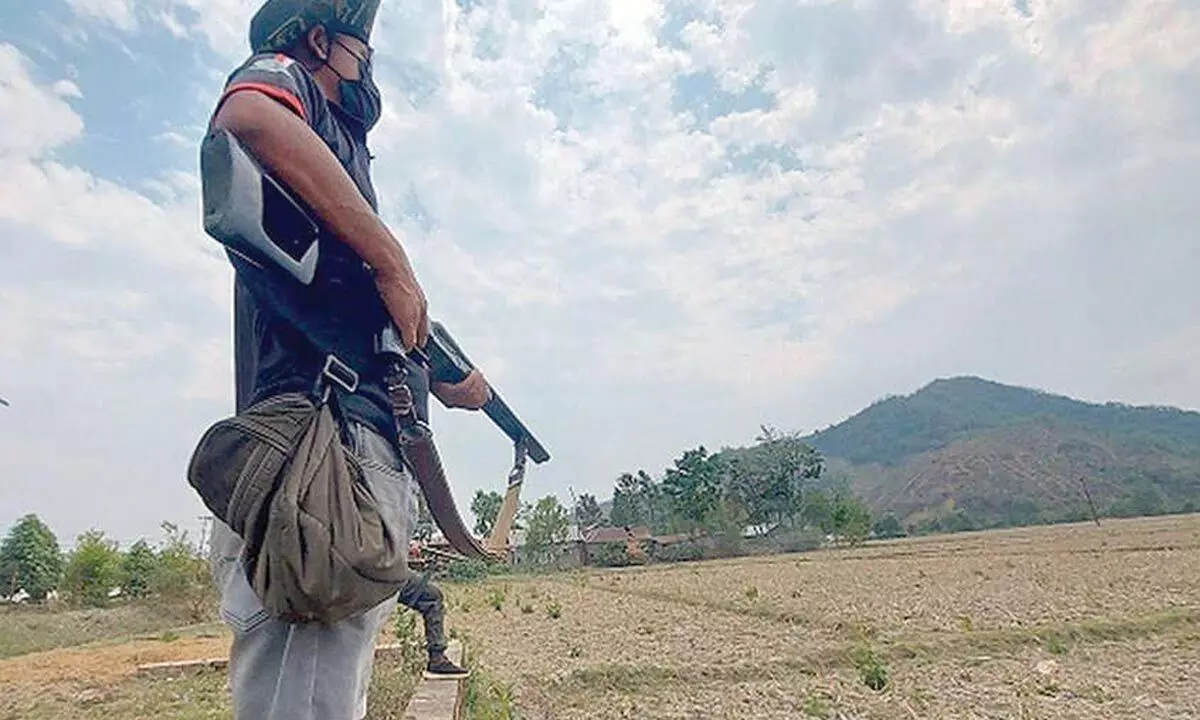North East strife... rooted in history

Obviously, this complicated line of McMahon Line based on 'prominent' geographical identities has led to different perceptions on the border itself between India and China.
Commenting on the boundary line along the whole of the North-East Frontier that became famous as the McMahon Line, McMahon pointed out: ‘The frontier work of the past three years and the negotiations of Tibet Conference at Simla have served to make clear the mutual rights and responsibilities of Great Britain, China and Tibet and it may be hoped that the North East Frontier will now be removed from the anxiety which beset the Indian government during the last few years.’
The McMahon Line runs over a distance of 820 miles or 1,320 kms of which 640 miles (998 kms) is between India and Tibet from the tri-junction of Bhutan, Tibet and Kameng district of present day Arunachal Pradesh, through the crest of the Himalayas to the Diphuk Pass to northwest Burma where India, Burma and Tibet meet. Commencing from a point to the east of Bhutan, it crosses the Namjang River and follows the eastern range of the Great Himalayas, then proceeds east and northeast and crosses the Subansiri River and then the Tsari River just south of Mayyitun.
From this point, it takes a northeastern direction, crossing the Tunga Pass, continues eastward again, crosses the Siang River and ascends the watershed between Rangta Chu in Tibet and Dihang (Siang) and its tributaries in India. Thereafter, it runs south to a point, just below latitude 28° 30" and just west of longitude 96°30", crosses Lohit a few miles to the north of Kahas and joins the tri-junction of Indian, Burmese and Tibetan boundaries near the Diphuk or Talik Pass.
Obviously, this complicated line based on 'prominent' geographical identities has led to different perceptions on the border itself between India and China. This apart when we turn our attention to the British administration of the region, the differences were only sustained and never given a thought to beyond 'self-interest'.
Look at the Posa system - a system of retainership given to various tribes and chiefs to remain subdued to British rule. Proceedings of the Indian History Congress(57th Session, December, 1996) in this context because it discusses the posa system comprehensively.
Mackenzie’s views are very clear and true to the nature of the posa rights of the tribal chiefs, the official writings of the British period distorted the facts in this regard. In general, the term posa came to be applied to all payments made to the hill tribes by the governments; whether these were in commutation of black mail, compensation for customary demands of the tribal chiefs of the bordering hills of Arunachal Pradesh, it was often confused with ‘blackmail’ in the official jargon of the British period.
It is very clear that the British administrators neither had the intention to understand the true nature of posa nor could they make their doubt clear as to what it was. They cared little to ascertain ‘whether these claims had their basis in primeval rights or whether they were merely the definite expression of barbarian cupidity.’
The apathetic attitude towards ascertaining the true nature of posa that we see the conflicting visions of the British administrators on posa. Sometimes it was called ‘blackmail’, and at other times it was understood as ‘a well-ascertained revenue payment, on account of which a corresponding remission was made in the state demand upon the ryot and was compared even with ‘the chouth of the Marattas and blackmail of the ancient highlanders.’ The situation becomes gloomier when one finds the same comparison of posa with ‘blackmail’ in recent publications.
This Posa system had often been called 'blackmail' by the British who conveniently forgot that it originated in Bengal in a different context. The system of payment of blackmail was, in fact, a British polity stated to buy the raids of the aborigines of the Rajmahal hills in Bengal presidency. The British continued the posa system even after the occupation of Assam as it was under the Ahoms. It was the initial policy of the local British officers especially under David Scott the agent to the Governor General, North East Frontier (1824-31) ‘to maintain intact the arrangements of their native predecessors, and to avoid the appearance of anything like radical or unexpected change.’
However, demands within the British establishment were to either change the system or altogether abolish the system as the direct collection of posa was viewed as inconvenient and as the rights of the tribal over the ryots of Assam who considered the British as their subjects. Robertson, the agent to the Governor General and Commissioner of Assam (1832-34), directed Captain White in early 1834 to carry on negotiations with the chiefs of the hills under which either a certain sum of money should be annually paid to them in lieu of all demands or a certain quantity of various articles be collected for them at fixed localities.
Under no circumstance were they allowed to proceed beyond a defined line to collect their contributions personally. In this connection, the Government of India held the view that stopping of posa might lead to troubles and since it did not affect its interests immediately, the conciliatory policy regarding theposa collection should continue. Accordingly, Captain White recommended payment of posa in cash rather than in kind directly from the ryots. It was thought by the local officers that a humane policy displayed towards the tribes would effectively secure the peace of the outlying areas and lead to beneficial results.







